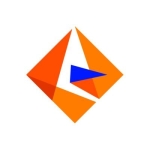What is our primary use case?
I have always worked in data analysis, data warehousing and information services in the corporate environment and, more specifically, mostly in the insurance industry. I used to be a SAS programmer because I'm always interested in it. Even though I'm not using the product officially in the corporate environment. I use it personally.
I use the free cloud version. I use it when I work for the agriculture industry and I do their analysis for them. I like to use it for many data analysis tasks and working with business information.
How has it helped my organization?
At this point in my career it really just improves what I am able to do for my personal clients. That is because I am very familiar with the product and it does what I need it to do. I have the benefit of experience with the tool and it improves my services.
What is most valuable?
I just use the main features of SAS (Statistical Analysis System). I use it to work with data from Excel and then go from SAS to Excel. It is very light usage really. I don't use the broader capabilities. There is probably 90% I haven't used at all.
What needs improvement?
Data analysis and analytics tools can always be improved. That could be to simplify or enhance the product. Technology is progressing very much in the area of analytics. I suppose the sky is the limit when it comes to improvement. There are all kinds of better ways of reading data, better methods of presenting data, better analytics — all of those things — new advancements come out every day.
Additional features that I'd like to see in the next release would be making a better, more graphical interface. More graphical ways of representing data as well. Today the graphic element of programs is a big thing. Why should I have to use something that is not pleasing and simple when I've got the opportunity to use something out there that offers me better graphical options and different options of graphic display?
I also have ideas for the programming side. I'd like to be able to more with the MDDBs (Multi-relational Databases) in the cloud, utilizing all the cloud features. You want to be able to have the information that you are analyzing available. If all the information you need is available in the cloud, people in different locations can look at it and you can help them to look at it in an analytical manner. So maybe instead of just showing them results at a high level that they may not be so interested in, they can click on a button or a tab or something else and navigate better to the data that interests them. The information opens up in a more customized way to their interests and concerns and then they read the analysis in the way that they want to see.
To some extent, you've already got all of that. But those are the features that can be mainly improved to give them greater power over how they drill into it. Then the same information is available all over, people are examining the same information and are on the same page even if they choose to view it in different ways.
For how long have I used the solution?
I have been using the solution since before the first official stable release six years ago.
What do I think about the stability of the solution?
I think the product is very stable. I think it's a marvelous product. It is very widely used by many people and I never hear people complain. There are so many other options for data analysis coming up. Whether it's Oracle, or Microsoft, or Sigma Data Analysis — another German company — all these other companies have introduced their data analysis products. These are all competing with SAS at the moment. Maybe some will get better. But I like SAS because I know it. And when they see what other competing products do better, they can add features.
What do I think about the scalability of the solution?
It is a very vast program and you only use what you need. As much as you can use it, it is as scalable as you want to make it. There are good options for making use of it from individuals to an enterprise solution. If that's the meaning of scalability, then it can grow with you. Also, I know they bring out new releases of the software which is scaling in even another way.
How are customer service and technical support?
I'm satisfied with the support I get from the company when I need it. Online support is very good. I don't have a department of people to turn to if I get stuck. So I go on to the internet or I go online and I ask a question. I get back answers from the SAS support without any trouble. I'm very happy with it.
Which solution did I use previously and why did I switch?
I used to use Excel only but as I was working in corporations where they had better tools for analysis that were quicker and better, it made a lot of sense to learn them. I still use Excel a lot because it can do some things very well. These days I have more powerful options.
How was the initial setup?
Most of the time, I do my own setups. A while ago we used it on the mainframe. I was employed in the corporate world for a long time. We have used it on PCs in the mid-range. Right now, for me, I use it either on a virtual machine or in the cloud. I have to go by my own instincts by outlining what is necessary. Sometimes technology just tells you what to do. I'm 72 already, so I'm on my way to not using it much anymore, but I still follow the changes.
The deployment takes different time depending on how it is deployed, but I am such an experienced person with it, I don't think it is ever hard. It lets me do the things I have practiced all these years and I can do analysis for people from where I am right here, via the internet.
What about the implementation team?
I am an expert in this SAS Data Management tool. Many people and companies use it in South Africa. But I have been an expert in the SAS program for a long time and maybe am one to the most experienced with it. I do not really do installations anymore, but always did my own. Right now I am more prepared to do analysis for companies over the internet.
What's my experience with pricing, setup cost, and licensing?
I find that their corporate price for licensing is very expensive. I don't pay because I'm using it free of charge on the cloud for personal use. But I know, if I want to buy, or if I want to have a version here, on-premises and installed on my desktop, then it is expensive.
I don't know the exact price, however as I haven't made any inquiries about that yet. When my needs change maybe I will have to.
Which other solutions did I evaluate?
Other people were in charge of choosing the products and options. I was not involved in that process, so I don't have much to compare it against. I'm only using this one product all the time for the analytics and supplement the use with Excel. I'm now at a stage where I got back to learning more about the other capabilities because of how they have improved. I'm not getting extra formal training or anything like that. But the other thing is that SAS has got everything and so much more than when I started to use it. Like, MDDBs and all of the additional capabilities. All of a sudden you have many new capabilities to learn and use. Now I am not a programmer and have much more power without expending that energy.
What other advice do I have?
I think this is a great product. On a scale from one to ten when one is the worst and ten is the best, for me, it would have to be a ten. I have some ideas as to how it can be better, but it is a very good product.
Disclosure: My company does not have a business relationship with this vendor other than being a customer.















Hi, We are currently using SAP DS for address and name standardization purposes; our client wants to evaluate whether there is any other product on the market which can do better. The question I have is, how good is the address cleansing, parsing and enrichment capability of the DataFlux? Also, does it provides the data coverage for all the global countries?
Any suggestion will be useful for my analysis.
Thanks